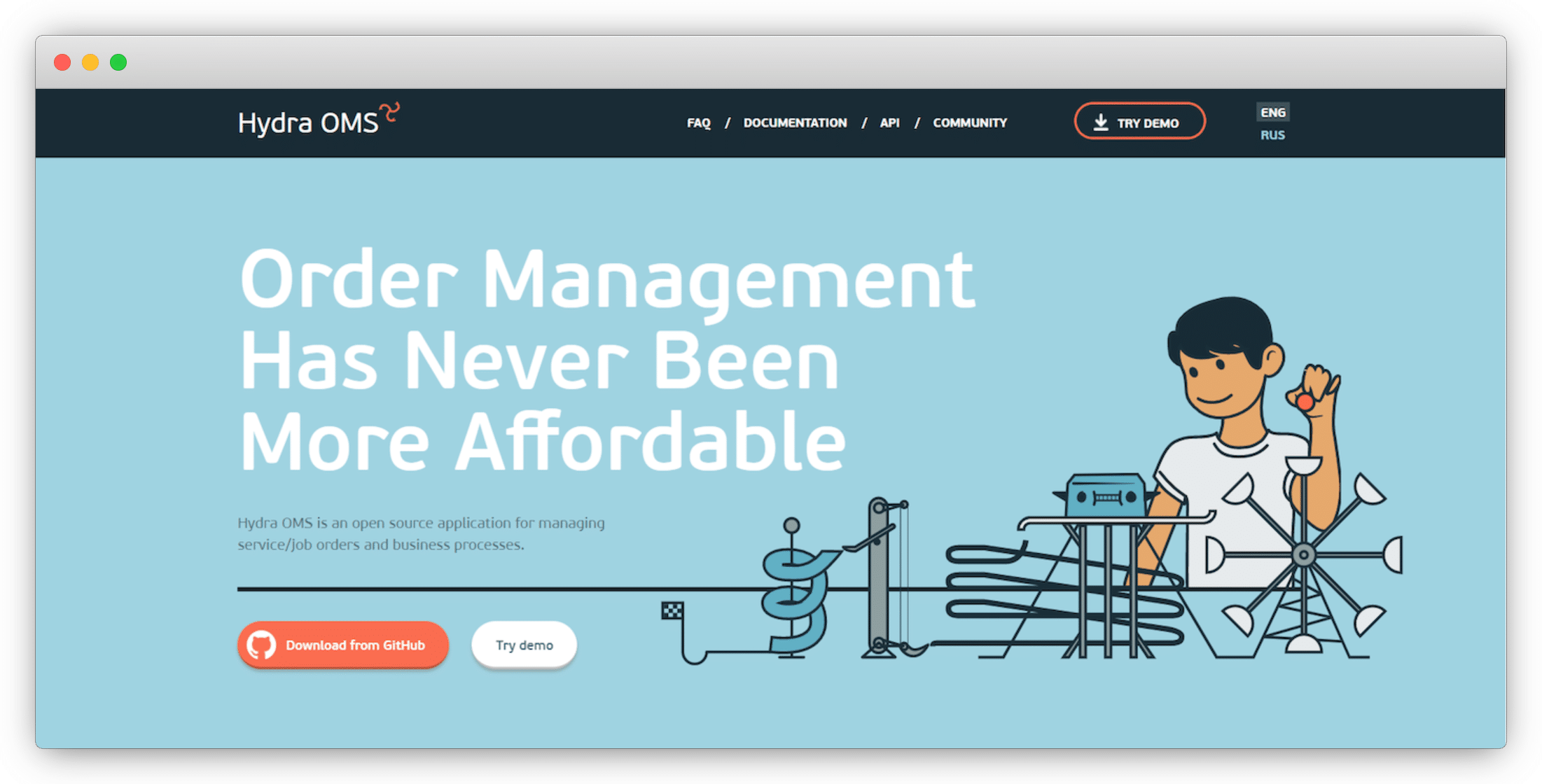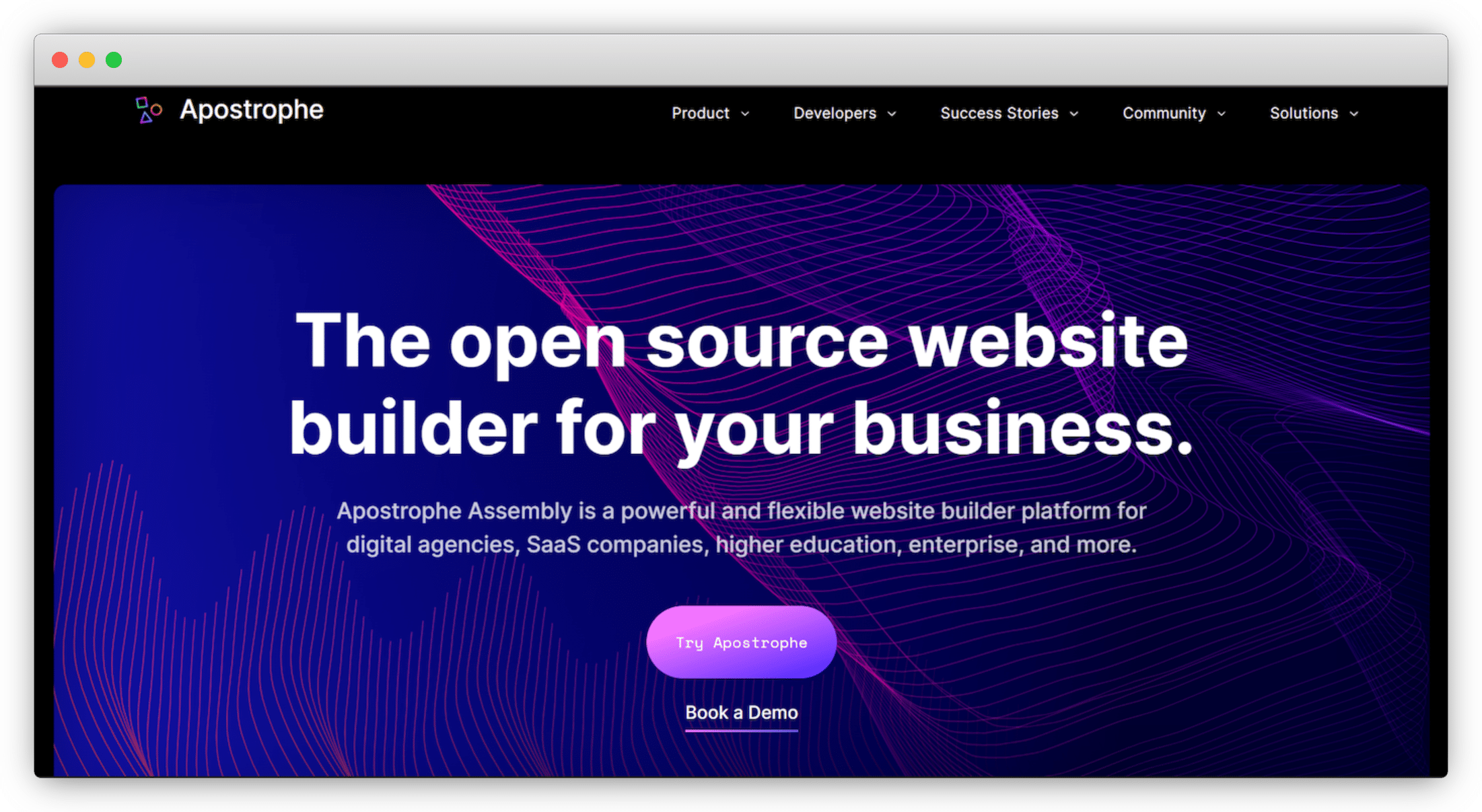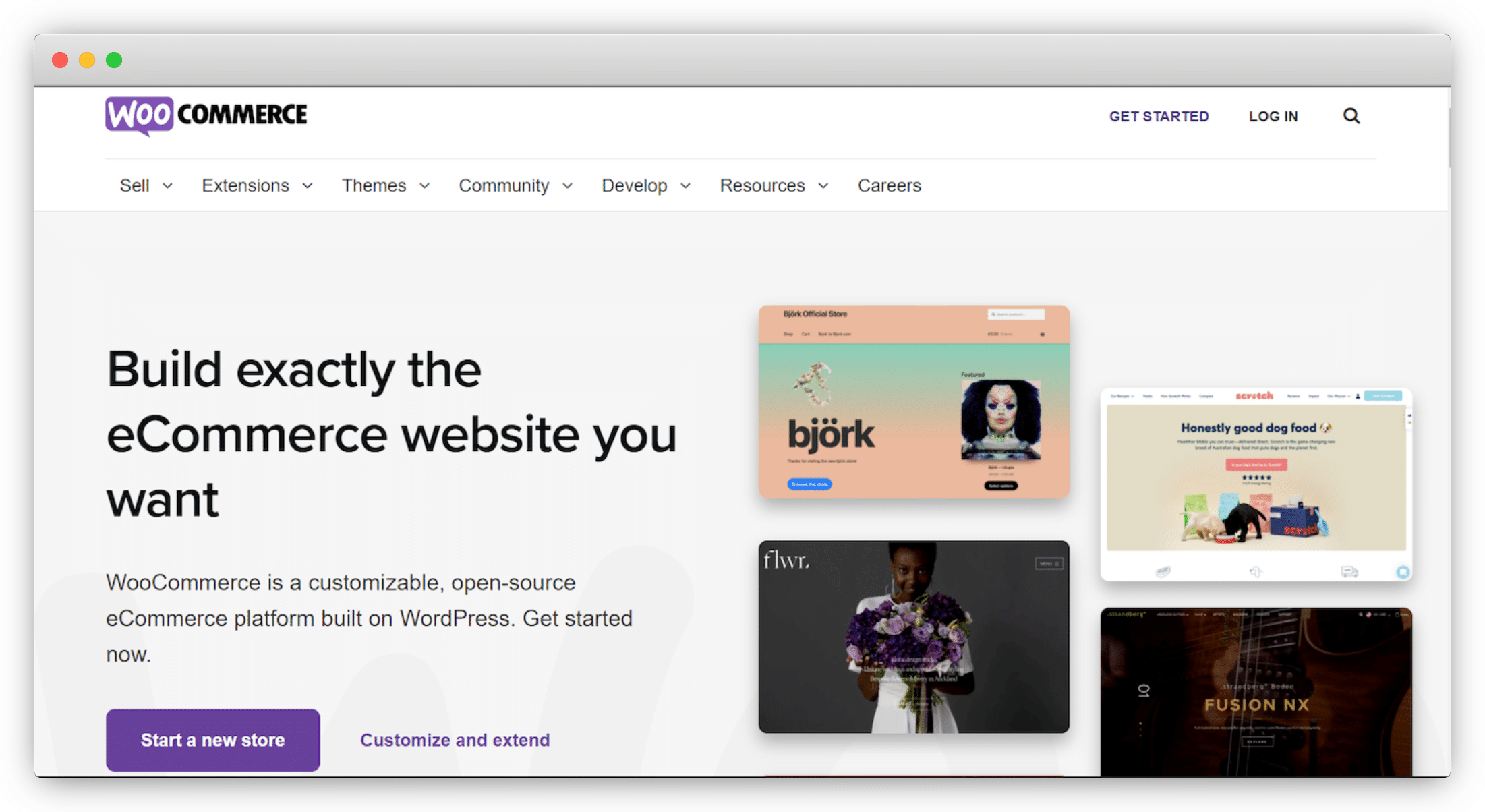The Best Open Source E-Commerce Software in 2023

Businesses must carefully weigh numerous factors when selecting an appropriate e-commerce solution.
Consider the current state of your organization as well as factors like simplicity and ease of use, language and multi-channel support, integrations, and payment processing when selecting a solution.
There are different types of e-commerce platforms that compare to some of the most popular solutions.
fabric is a headless CMS that boasts of being flexible, secure, and scalable, supporting your endeavors to grow your company your way.
In the world of entertainment, telekinesis is one of the most respected fantastical abilities. The talent for making things move without touching them looks very cool on camera. This level of power taps into the desire of the average person to exert a great amount of contactless influence on materials around them, an ideology that mirrors that of the world of e-commerce.
E-commerce provides businesses the touchless opportunity to create value through the mutual exchange of goods and/or services for compensation; however, selecting the right e-commerce software for your organization can be a complex decision. Whether you’re deciding between open source platforms, SaaS, or DIY e-commerce solutions, you’ll want to consider factors like simplicity, flexibility, the quality of your development team, and even the top priorities of your company for penetrating the market.
Even among the narrower category of open source e-commerce solutions, there is a wide range of options available. In this article, we’ll explore several of the best free e-commerce software solutions currently on the market and compare them based on key features.
[toc-embed headline=”E-Commerce Platforms”]
E-Commerce Platforms
As you consider e-commerce software solutions, it’s important to prioritize your company’s own needs as the criteria for selecting the right platform or features. For instance, if you’re a startup that’s following the Lean methodology, you most likely have a small team of developers and will probably be interested in the best free e-commerce software that provides enough features for you to develop a Minimum Viable Product (MVP). On the other hand, a development team with a significant number of experts and money at their disposal may be able to afford to leverage other open source e-commerce software that provides end-to-end integrations and tools for a premium fee.
Whatever your company’s development team looks like, here are some important factors to consider when selecting an e-commerce platform:
- Customizability: The ability to adjust things like color and other aesthetics is key to the brand image of your company. You also need as much wiggle room as possible for backend integrations in order to scale properly, which is why customizability is a key factor depending on the growth plan of your company.
- Language support: Depending on the demographics of your target market and their geographical location(s), you may want to consider how many languages your e-commerce software supports in a bid to ensure that you can penetrate that market, as language barriers are a key issue.
- Simplicity: This summarizes the ease at which your team can get started with the platform, and it’s especially important if you don’t have a robust development team or very experienced hires. Platforms that onboard clients easily will save you development time, which can be cost-saving if your company has a time constraint.
- Vendor and payment option flexibility: When choosing an e-commerce software, it’s important to know the organization behind the product you’re leveraging while weighing the pricing plan, especially if your company’s cash flow isn’t strong.
Again, the trick for selecting the best open source e-commerce software is to identify which criteria are of critical importance to your company and prioritize those when selecting the right tool to meet your needs. Here’s an overview of some of the most popular e-commerce platforms currently available, compared by the features outlined above:
| E-Commerce software | Customizability | Language support | Simplicity | |
| CubeCart | Yes (possesses various customizable features) | Yes (supports seventeen languages) | No | Yes (supports numerous payment gateways and customizable exchange rates) |
| fabric | Yes (provides unlimited customization) | Yes (requires locale configuration in your code) | Yes | Yes (supports Google Pay, Apple Pay, Stripe, and credit, debit, and prepaid cards) |
| Magento (now Adobe Commerce) | Yes (limited) | Yes (supports ten languages) | No | Yes (supports Paypal, Amazon Pay, and other customizable payment gateways) |
| OpenCart | Yes (unlimited products and categories, as well as other features) | Yes (requires locale configuration in your code) | No | Yes (supports Paypal, Square, etc.) |
| PrestaShop | Yes (available through the purchase of modules) | Yes (supports over sixty languages) | No | Yes (supports hundreds of payment gateways) |
| Shopware | Yes (allows multiple forms of frontend and backend customization using APIs) | Yes (available via language packs) | No | Yes (supports Paypal, with other payment portals available as extensions) |
| Sylius | Yes (available through the use of plugins; however, they’re limited) | Yes (requires locale configuration in your code) | No | Yes (only supports Paypal and Stripe) |
| WooCommerce | Yes (available through extensions) | Yes (available via language packs and extensions) | Yes | Yes (supports Square, Amazon Pay, PayPal, Stripe, and others) |
[toc-embed headline=”PIM Software”]
PIM Software

Product information management (PIM) software is software solutions that are developed with the aim of resolving challenges with storing and leveraging critical data surrounding products. PIM software drives sales by providing the customer with the insight necessary to justify a purchase.
Here are some important factors to consider when selecting a PIM software:
- Customizability: PIMs serve as the repository for e-commerce software catalogs. As such, there is a huge amount of flexibility that’s expected. Depending on your organization’s industry focus, businesses that only sell products they produce themselves may require less customizability than e-commerce stores that offer a myriad of products.
- Data enrichment: the ability to include additional information to the data on your platform can come in quite handy should your company’s e-commerce software scale rapidly. It also reduces the clutter in your logs and database when it’s easy to access the data and its related information.
- Multi-channel support: as e-commerce companies compete for the attention and possible patronage of clients through aggressive marketing, PIMs that have multi-channel support are uniquely valuable for juggling the implementation of marketing strategies while enabling access to customers. Multi-channel support offers your company the ability to reach your customers across different internet and/or social media platforms, which further helps you streamline your marketing plans to suit unique target audiences.
- Simplicity: depending on the strength of your development team, opting for a PIM software that provides an easy onboarding process may be a critical aspect of your decision.
Here’s an overview of some of the most popular PIM software platforms currently available, compared by the features outlined above:
| PIM Software | Customizability | Data enrichment | Multi-channel support | Simplicity |
| Akeneo PIM | Free customization of rights management, validation workflows, versioning, and individuals is available) | Free data enrichment | Yes | Yes |
| AtroPIM | Yes | Yes | Available via third-party (Channable) | Yes |
| Ergonode | Available only with the PRO plan | Yes (paid plan) | Yes (paid plan) | Yes |
| fabric | Yes (unlimited customization of products, categories, and other information) | Yes (unlimited data enrichment) | Yes (integrates well with social media and other web channels) | Yes |
| Pimcore | Minimal customization with the free plan | Yes (paid version) | Offers free mobile marketing, marketing automation, and e-commerce integrations | Yes |
[toc-embed headline=”OMS Software”]
OMS Software

OMS software is digital infrastructural products built to monitor and facilitate the final stage of the e-commerce value chain: order delivery. An OMS demystifies the process of managing order fulfillment through various features and integrations that make it possible to automate and easily track orders and delivery. This, in turn, fosters easier customer acquisition and retention.
Here are some important factors to consider when selecting an OMS software:
- Automation ability: the process of organizing and fulfilling orders is one that can make or break customer experience on your platform, which is why speed and efficiency are important. Automating this process reduces the margin for error and makes coordinating logistics more seamless.
- Integrations: as business needs evolve and consumer purchasing patterns change, the responsiveness of your organization will be called to question; this is why you should strongly consider how well an OMS plays with other software solutions. OMS solutions that engage in a digital handshake with a robust network of third-party solutions can be a game-changer.
- Language support: with growing demand in an increasingly borderless world, language support is a key ingredient in managing orders within and outside your company’s target market.
- Payment processing: payment officially establishes the relationship between buyer and seller, and emphasis must be placed on making this process smooth. The presence of webhooks and other instrumental features should be sought after in a reliable OMS software for a scalable e-commerce company.
- Multi-channel support: identifying and processing orders based on various factors like discount, delivery, or payment policies that may differ by order channel and the product selected requires additional platform support in order to reduce the human factor and possible errors in order taking. Multi-channel support also facilitates marketing across multiple platforms, which will help to diversify revenue sources for your company.
Here’s an overview of some of the most popular OMS software platforms currently available, compared by the features outlined above:
| OMS Software | Automation ability | Integrations | Language support | Multi-channel support | Payment processing |
| ChickPea | Yes | No | No | No | Yes |
| Dolibarr | No | Yes (limited third-party integrations store) | Yes (over fifty languages supported) | No | Yes (limited third-party payment solutions) |
| fabric | Yes | Yes (integrates well with platforms like Amazon, Oracle NetSuite, etc.) | No | Yes (leverages an omnichannel feature to enable connection to numerous stores, digital marketplaces, and sales channels) | Yes (supports Google Pay, Apple Pay, Stripe, and credit, debit, and prepaid cards) |
| Hydra OMS | Yes | Yes | No | Yes | Yes (supports over thirty payment platforms) |
| Odoo | Yes | Yes | Yes (supports eleven languages) | No | Yes (eight payment platforms supported) |
[toc-embed headline=”Headless CMS Systems”]
Headless CMS Systems

Headless CMS are time-saving software solutions that greatly reduce the time to market for e-commerce companies. These solutions take on the brunt of managing the backend, authentication, authorization, security, and database(s), while the development team can focus on managing the customer’s user interface experience via frontend development.
Here are some important factors to consider when selecting a Headless CMS software:
- API or code management-based: an efficient API CMS conveniently outsources the bulk of the work of managing a CMS, as it handles backend security, databases, integrations, and other necessities while providing the development team the time to focus on polishing customer experience.
- Data source integrations: e-commerce data analysis relies on customer profiling, which is why the ability to combine data sets from different points of origin can provide much-needed clarity and can significantly impact profitability.
- Ease of implementation: again, depending on the quality of your development team, ease of implementation is an important factor. A good CMS will be easy to use and will have thorough, user-friendly documentation available for its users to consult.
- Flexibility: e-commerce platforms evolve rather quickly; a reliable CMS would be one that allows multiple iterations in a bid to improve the quality of your e-commerce platform. A flexible headless CMS solution is one that leaves room for modifications that suit your company’s unique needs.
- Language support: with digital content and other information driving consumer purchases, CMS software has become increasingly popular, especially solutions that facilitate adequate translation for a diverse audience.
Here’s an overview of some of the most popular Headless CMS solutions currently available, compared by the features outlined above:
| Headless CMS Systems | API or code management based | Data source integrations | Ease of implementation | Flexibility | Language support |
| Apostrophe | Yes (allows API consumption and code management using different frontend development languages) | Yes (robust data source integration features) | Yes (leverages popular programming languages and frameworks like Vue.js, Angular, jQuery, and React) | Yes (unlimited content data model customization) | Yes (language translation is possible through an extension) |
| Directus | Yes (limited customization with the free plan) | Yes (supports multiple databases, APIs, and storage provided by Google and AWS) | Yes (integrates well with Vue.js, Angular, Netlify, Next.js, Hugo, and Gatsby) | Yes (limited content flexibility with the free plan) | Yes (supports over twenty languages) |
| fabric | Yes (unlimited customization) | Yes (provides significant data source integrations) | Yes (provides integration with any UI tool and framework) | Yes (unlimited content flexibility) | Yes (requires locale configuration in your code) |
| Ghost | Yes (limited depending on your payment plan) | Yes (premium feature) | Yes (touted to be able to leverage any frontend language) | Yes (premium feature) | Yes (language translation is possible via an extension) |
| Netlify CMS | Yes | Yes (limited) | Yes (integrates well with Vue.js, Angular, Netlify, Next.js, Hugo, and Gatsby) | Yes | Yes (requires locale configuration in your code) |
| Strapi | Yes | Yes (limited) | Yes (integrates well with Vue.js, Angular, React, Next.js, Nuxt.js, and Gatsby) | Yes (three user default roles available) | Yes (requires locale configuration in your code) |
| Tina | Yes | Yes (limited) | Yes (leverages Next.js) | Yes | Yes (requires locale configuration in your code) |

Tech advocate and writer @ fabric. A .Net, Blazor, and Angular software engineer @ GTBank.
